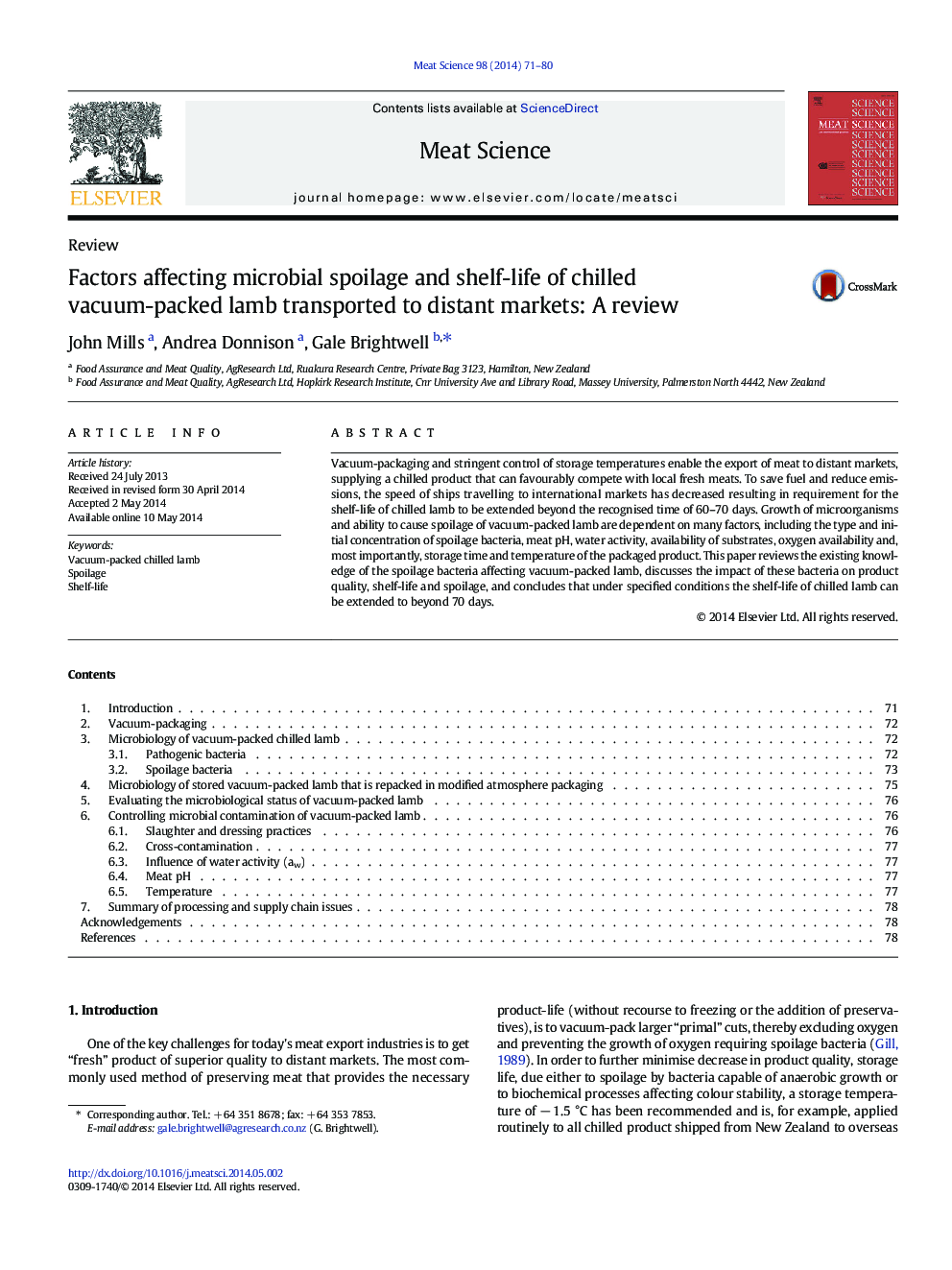| Article ID | Journal | Published Year | Pages | File Type |
|---|---|---|---|---|
| 2449936 | Meat Science | 2014 | 10 Pages |
•Reviews existing knowledge of the spoilage bacteria affecting vacuum-packed lamb•Impact of these bacteria on product quality, shelf-life and market access•Microbiology of chilled lamb and spoilage potential is different to that of beef•The shelf-life of chilled lamb can be extended to 70 days and beyond
Vacuum-packaging and stringent control of storage temperatures enable the export of meat to distant markets, supplying a chilled product that can favourably compete with local fresh meats. To save fuel and reduce emissions, the speed of ships travelling to international markets has decreased resulting in requirement for the shelf-life of chilled lamb to be extended beyond the recognised time of 60–70 days. Growth of microorganisms and ability to cause spoilage of vacuum-packed lamb are dependent on many factors, including the type and initial concentration of spoilage bacteria, meat pH, water activity, availability of substrates, oxygen availability and, most importantly, storage time and temperature of the packaged product. This paper reviews the existing knowledge of the spoilage bacteria affecting vacuum-packed lamb, discusses the impact of these bacteria on product quality, shelf-life and spoilage, and concludes that under specified conditions the shelf-life of chilled lamb can be extended to beyond 70 days.
